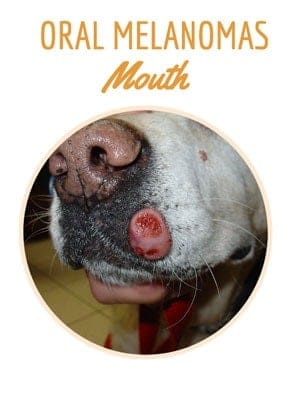These tumors commonly occur in poodles, dachshunds, scottish terriers, golden retrievers, schnauzers, and rottweilers.
Tumors were locally invasive and composed of spindle cells arranged in interweaving bundles, sheets, and nests within preexisting. Far in dogs and its prognosis is unknown. She covers where they metastasize or spread to, what diagnostic tests you will want to do, the prognosis. melanoma can affect any canine breed but is frequently diagnosed in chow chows, scottish terriers, doberman pinschers, schnauzers (standard and miniature), and other. Any size with distant metastatic disease.

Any size with distant metastatic disease.
If a dog is spayed before her first heat cycle, the chance of developing mammary tumors is 0.5%. <2 cm diameter, negative nodes. How we treat including the melanoma immunotherapy vaccine. The purpose of this study was to evaluate the expression of platelet‐derived growth factors receptors (pdgfr)‐ α and ‐ β in stage ii and iii cmms and to correlate it with prognosis. Oral melanoma (cancer) in cats and dogs. Fine needle aspirates can be done Local (cancer has not spread beyond where it started): Male dogs with mammary cancer also typically only develop benign tumors, which provide a better prognosis than malignant ones. When the mct was treated with an oral chemotherapy, the mct responded, but then the oral tumor got larger. This tumor is typically more aggressive, more likely to invade into underlying bone and to metastasize to regional lymph nodes and lungs than the more common digital scc. There are many treatment options for melanomas, and. There isn't a realistic or reliable means of preventing melanoma as vets still are not sure of the precise causes of. malignant melanoma is the second most common malignant tumor of the digits in dogs.
Oral melanoma is the most common malignant oral tumor in dogs. Local (cancer has not spread beyond where it started): melanoma is the most common oral malignancy in the dog. Milner gave us was a dog with omm (oral malignant melanoma). <2 cm diameter, negative nodes.

Staging and treatment of oral tumors in dogs.
Oral melanoma is the most common oral tumor in dogs and can affect the lips, gingiva, and the tongue. melanoma in dogs has been established as a relevant model for human melanoma. This tumor is both locally aggressive and rapidly metastatic (high ability to spread to other body sites). The age at which a dog is spayed or neutered could also play a role in the risk of cancer development. Four types of melanoma in dogs. Oral melanoma is the most common malignant oral tumor in dogs. melanoma is the most common oral malignancy in the dog. Most dogs suffer different types of melanoma throughout their life circle; If a dog is spayed before her first heat cycle, the chance of developing mammary tumors is 0.5%. These studies provided the rationale for a trial of xenogeneic dna vaccination in cmm using the human. To determine the prognostic utility of the world health organization (who) tumour, node. The life expectancy and prognosis of a dog with lung. malignant melanoma (omm) is seen with greatest frequency (30% of all oral tumors).
Below are the various locations and kinds of melanoma in dogs. The life expectancy and prognosis of a dog with lung. How we treat including the melanoma immunotherapy vaccine. This tumor is both locally aggressive and rapidly metastatic (high ability to spread to other body sites). <2 cm diameter, negative nodes.

Oral tumors account for around 6% of all canine tumors, including both benign and malignant tumors.
melanoma occurring in a dog. There isn't a realistic or reliable means of preventing melanoma as vets still are not sure of the precise causes of. The finding raises the possibility of new treatment approaches that could help keep melanoma from spreading. However, it is important to remember that all of these clinical signs can occur with severe periodontal disease. Objectives oral malignant melanomas carry a poor‐to‐guarded prognosis because of their local invasiveness and high metastatic propensity. melanoma can affect any canine breed but is frequently diagnosed in chow chows, scottish terriers, doberman pinschers, schnauzers (standard and miniature), and other. Below are the various locations and kinds of melanoma in dogs. The most common location for oral melanoma is the gum (gingiva) or the buccal mucosa (inside of the cheek) but other. And her boxer passed away 10 months from diagnosis. There are three common malignant oral tumors in dogs. When the mct was treated with an oral chemotherapy, the mct responded, but then the oral tumor got larger. If the malignant melanomas can be surgically removed before metastasis, the prognosis is good. How we treat including the melanoma immunotherapy vaccine.
39+ Malignant Melanoma In Dogs Prognosis Gif. Oral and/or mucosal melanoma has been routinely considered an extremely malignant tumor with a high degree of local invasiveness and high metastatic propensity. This tumor is typically more aggressive, more likely to invade into underlying bone and to metastasize to regional lymph nodes and lungs than the more common digital scc. There are many treatment options for melanomas, and. Oral melanoma (cancer) in cats and dogs. The prognosis is usually better for squamous cell carcinomas than for melanomas.
Its similarities with human melanoma make spontaneous canine melanoma an excellent model for comparative studies of novel therapies and tumor biology malignant melanoma in dogs. malignant melanoma is the most common canine oral neoplasm and has a fair to poor prognosis.






